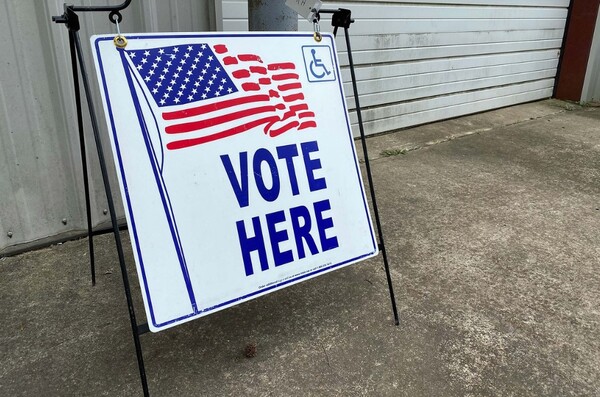
(function(d, s, id) { var js, fjs = d.getElementsByTagName(s)[0]; if (d.getElementById(id)) return; js = d.createElement(s); js.id = id; js.src = “https://connect.facebook.net/en_US/sdk.js#xfbml=1&version=v3.0”; fjs.parentNode.insertBefore(js, fjs); }(document, ‘script’, ‘facebook-jssdk’)); –>
–>
December 9, 2023
The Iowa caucuses are less than six weeks away, and only eleven months remain until Election Day 2024. Right now, it appears possible that both Donald Trump and Joe Biden will be on the ballot for president. So maybe it is a good time to see what voters think before the nomination process begins.
‘); googletag.cmd.push(function () { googletag.display(‘div-gpt-ad-1609268089992-0’); }); document.write(”); googletag.cmd.push(function() { googletag.pubads().addEventListener(‘slotRenderEnded’, function(event) { if (event.slot.getSlotElementId() == “div-hre-Americanthinker—New-3028”) { googletag.display(“div-hre-Americanthinker—New-3028”); } }); }); }
Recent voter preference polls between President Biden and former president Trump have given us results that range from Biden +4 to Trump +6. In the current Real Clear Politics polling average, Trump is up by +2.
For some reason, political analysts seem surprised by this. However, if you look at the running average of Trump-Biden polls over the past year, you see them swapping leads several times. In May of 2023, Trump had a lead of +2.5. Joe Biden had a +2 lead as recently as August. Other than the time of year, has anything really changed?
The first question everyone wants answered is, are the polls accurate? The truth is, nobody knows for sure. It depends on whom you poll, where you poll, how you weight your survey, and if some significant political event occurs when your poll is taken.
‘); googletag.cmd.push(function () { googletag.display(‘div-gpt-ad-1609270365559-0’); }); document.write(”); googletag.cmd.push(function() { googletag.pubads().addEventListener(‘slotRenderEnded’, function(event) { if (event.slot.getSlotElementId() == “div-hre-Americanthinker—New-3035”) { googletag.display(“div-hre-Americanthinker—New-3035”); } }); }); }
To get some idea of if the polls are reasonable, a good place to start is the Gallup Poll of Party Affiliation. If you look at the numbers for November 2023, the split is 29% Republican, 29% Democrat, and 40% independent. If you average the eleven monthly polls for 2023, there isn’t much difference: 27.3% Republican, 27% Democrat, and 43.5% independent.
When party leaners are included, things change. The average for 2023 gives us a split of 45% Republican and 43% Democrat. Remember, these numbers are based on what the respondents were willing to tell the pollster. For the record, during 2020, Democrats had a 47-43 advantage over Republicans in this same poll.
This raises the question of why polls are usually biased toward Democrats. In 2020, just before the election, CNN’s polling average had Joe Biden up by +10. At the same time, the Real Clear Politics poll average had Biden up by over +7. Biden actually won the popular vote by +4.5.
An interesting statistic regarding the 2020 election is the roughly seven million votes by which Joe Biden beat Donald Trump came from New York and California. Among the other 48 states, it was a 50-50 split. So where you poll does make a difference.
Right now, any national poll where the Democrat party affiliation number plus leaners is more than 4.5 percentage points higher than the Republicans may be biased. Based on the Gallup poll numbers, a closer to even split could yield better results. Interestingly, the Democrat/Republican split in the NBC poll was 40/39, Emerson was 37/35.5, and YouGov was 33/31. Assuming I calculated the numbers correctly, the Messenger poll was roughly 33/39 in favor of Republicans, which could be biased toward the GOP.
Almost all of the polls in the current RCP average use registered voters. A poll of all voters is supposedly the most inaccurate, while a survey of likely voters is usually the most accurate. Since pollsters typically switch to polling likely voters closer to election day, the present polls are likely not as accurate as possible.
‘); googletag.cmd.push(function () { googletag.display(‘div-gpt-ad-1609268078422-0’); }); document.write(”); googletag.cmd.push(function() { googletag.pubads().addEventListener(‘slotRenderEnded’, function(event) { if (event.slot.getSlotElementId() == “div-hre-Americanthinker—New-3027”) { googletag.display(“div-hre-Americanthinker—New-3027”); } }); }); } if (publir_show_ads) { document.write(“
Since the Rasmussen poll of likely voters shows Biden at +4, I would like to investigate it in more detail. Unfortunately, you have to be a subscriber, and I’m not. Over the previous twelve months, Rasmussen has gone from Trump +13 to Biden +4, contrary to the RCP average. This is a surprise since the Rasmussen Tracking Poll has Biden’s job disapproval at 53%, with 44% strongly disapproving. Do they know something everyone else doesn’t?
Besides Rasmussen, other polls I did not cover include Morning Consult and TIPP for access reasons; Reuters, which surveyed all voters; and Yahoo/YouGov because the Economist/YouGov poll was more recent.
Let’s look at three items from the polls likely to impact the 2024 election: Joe Biden’s job approval numbers, candidate favorability, and what voters believe are the country’s most serious issues.
First, Joe Biden’s job approval.
Quinnipiac: disapprove 59%, strongly disapprove 49%.
Fox News: disapprove 59%, strongly disapprove 43%.
NBC News: disapprove 57%, strongly disapprove 48%.
Emerson: disapprove 50%, no number for strongly disapprove.
Harris: disapprove 52%, strongly disapprove 37%.
Messenger: disapprove 55%, strongly disapprove 42%.
YouGov: disapprove 55%, strongly disapprove 42%.
Next, the latest candidate favorability numbers. The favorable number is first, then the unfavorable, followed by the net.
Quinnipiac: Trump 42/55/-13, Biden 37/59/-22.
Fox News: Trump 44/56/-12, Biden 41/59/-18.
NBC News: Trump 36/52/-16, Biden 36/53/-17.
Harris: Trump 51/44/+7, Biden 46/49/-3.
YouGov: Trump 43/52/-9, Biden 40/55/-15.
Finally, issues that voters feel are important.
Quinnipiac: economy 28%, preserving democracy 21%, and immigration 12%. Climate change came in at 5%. Abortion was just 3%.
Emerson: economy 39%, immigration 13%, and threats to democracy 11.5%. Climate change was not a topic and may have been tabulated as something else at 5.6%. Abortion came in at 5%.
Harris: Respondents could choose multiple items; inflation 30%, immigration 25%, and economy 24% were the top choices. Climate change came in at 13%. Abortion was not a separate issue, but women’s rights was chosen by 9%.
NBC News asked voters about important issues but limited it to issues that might prevent them from voting for a specific candidate. None of the above received 21%, protecting democracy 19%, abortion 18%, and immigration 14%. LGBTQ issues were at the bottom at 4%. My guess is the economy might have taken first place if it had been listed as a choice.
YouGov: inflation 21%, health care 13%, climate change 9%, the economy 8%, and immigration 8%. Abortion was the top choice of 5%.
An analysis of these numbers is pretty straightforward. My first impression is how consistent they are.
Biden’s job disapproval hovers around 55%. Clearly, voters do not believe he is doing a good job as president.
The real issue for Biden is the strongly disapproving numbers averaging nearly 44%. These folks are the ones with the torches and pitchforks. Trump would need the support of only an additional seven or eight percent of the mildly disaffected to get elected.
Favorability ratings are generally underwater for both candidates. The Harris poll was the only one to give either a positive number, which was Trump at +7. Averaging the numbers gives Trump a -8.6 favorability and Biden a -15. Since neither candidate is close to 50%, we will likely choose the person voters see as the lesser of two evils.
The issues voters see as most important are not trending in Biden’s direction. The economy, inflation, immigration, and protecting democracy favor Trump. Climate change did not get high numbers in most polls. Abortion, which was a significant issue in the 2022 midterm elections, is now mostly in the low single digits.
Can the political landscape change before Election Day? Of course. But for now, the Real Clear Politics average of Trump +2 seems justified.

Image: cagdesign via Pixabay, Pixabay License.
<!–
–>
<!– if(page_width_onload <= 479) { document.write("
“); googletag.cmd.push(function() { googletag.display(‘div-gpt-ad-1345489840937-4’); }); } –> If you experience technical problems, please write to [email protected]
FOLLOW US ON
<!–
–>
<!– _qoptions={ qacct:”p-9bKF-NgTuSFM6″ }; ![]() –> <!—-> <!– var addthis_share = { email_template: “new_template” } –>
–> <!—-> <!– var addthis_share = { email_template: “new_template” } –>




